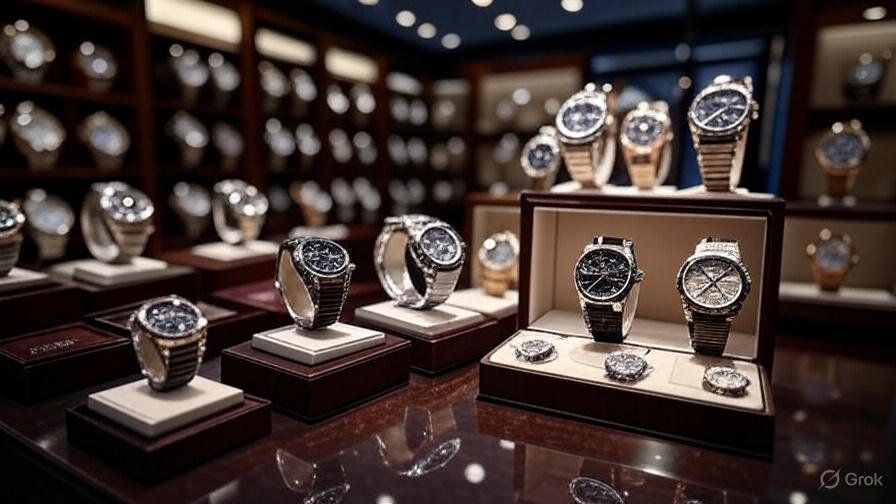The luxury watch industry, long a symbol of prestige and craftsmanship, is facing a growing challenge: the proliferation of high-quality replicas. Among the most coveted brands, Patek Philippe, a Swiss watchmaker renowned for its intricate designs and heritage, has become a prime target for counterfeiters. As the market for Patek Philippe replica expands, concerns are mounting among collectors, retailers, and the brand itself about the impact on authenticity, value, and consumer trust.
The Allure of Patek Philippe
Patek Philippe, founded in 1839, is synonymous with horological excellence. The brand’s timepieces, such as the Nautilus, Calatrava, and Grand Complications, are celebrated for their precision, artistry, and exclusivity. Owning a Patek Philippe is often seen as a milestone for collectors, with some models fetching millions at auctions. The brand’s commitment to handcrafted quality and limited production runs has solidified its status as a pinnacle of luxury.
However, this exclusivity comes at a steep price, with authentic Patek Philippe watches ranging from tens of thousands to several million dollars. For many, the dream of owning one remains out of reach, creating a fertile ground for counterfeiters to exploit.
The Rise of High-Quality Replicas
In recent years, the quality of counterfeit watches has improved dramatically. Unlike the poorly made fakes of the past, modern Patek Philippe replica often feature sophisticated materials, detailed craftsmanship, and even functional complications that mimic the originals. These high-end fakes, sometimes referred to as “super clones,” can deceive even seasoned collectors at first glance.
According to industry experts, the production of these replicas is largely concentrated in regions with advanced manufacturing capabilities. Advanced machinery, skilled labor, and access to high-quality materials have enabled counterfeiters to produce watches that closely resemble authentic Patek Philippe models. Some replicas even replicate the weight, finish, and movement of the originals, making detection increasingly difficult.
“The sophistication of today’s replicas is staggering,” says Clara Beaumont, a horology expert based in Geneva. “While they lack the soul and heritage of a genuine Patek Philippe, the visual and functional similarities are enough to fool many buyers.”
Impact on the Luxury Watch Market
The influx of Patek Philippe replicas poses significant challenges for the luxury watch industry. For collectors, the risk of purchasing a counterfeit watch undermines confidence in the secondary market, where pre-owned timepieces are often traded. Auction houses and retailers are now investing heavily in authentication processes to ensure the legitimacy of their offerings.
For Patek Philippe, the rise of replicas threatens the brand’s reputation for exclusivity. The company has long prided itself on its meticulous craftsmanship and limited production, but the presence of convincing fakes risks diluting the brand’s prestige. In response, Patek Philippe has intensified efforts to combat counterfeiting, including partnerships with law enforcement and the use of advanced anti-counterfeiting technologies.
Consumers, too, are affected. Many who purchase replicas knowingly do so to enjoy the aesthetic of a Patek Philippe without the exorbitant cost. However, others are deceived into believing they are buying an authentic timepiece, only to discover later that their investment is worthless. This has led to growing calls for better education and transparency in the watch market.
Legal and Ethical Considerations
The trade in counterfeit watches is not only a financial issue but also a legal one. Producing and selling replicas is illegal in many countries, as it infringes on intellectual property rights. Patek Philippe, like other luxury brands, actively pursues legal action against counterfeiters, targeting both manufacturers and distributors. Recent raids in Asia and Europe have led to the seizure of thousands of fake watches, but the problem persists due to the high profitability of the trade.
Ethically, the issue is more complex. Some argue that replicas democratize access to luxury aesthetics, allowing more people to enjoy the design of high-end watches. Others contend that counterfeiting undermines the artistry and innovation of brands like Patek Philippe, which invest heavily in research, development, and craftsmanship.
How to Spot a Replica
For collectors and buyers, distinguishing a genuine Patek Philippe from a replica requires careful scrutiny. Experts recommend examining several key aspects:
- Movement: Authentic Patek Philippe watches feature in-house movements with intricate finishing. Replicas often use cheaper, mass-produced movements that lack the same level of detail.
- Materials: Genuine Patek Philippe watches use high-grade materials, such as 18k gold or platinum. Replicas may use lower-quality alloys or plating that wear over time.
- Engravings and Logos: Authentic watches have precise, crisp engravings. Replicas may have misaligned or blurry logos and text.
- Weight: Genuine Patek Philippe watches have a distinct heft due to their premium materials. Replicas often feel lighter or unbalanced.
- Documentation: Authentic watches come with certificates of authenticity, serial numbers, and detailed records. Buyers should always verify these with the brand or authorized dealers.
Consulting with a certified watchmaker or purchasing from authorized dealers is the safest way to ensure authenticity.
The Future of the Fight Against Replicas
As the battle against counterfeit watches intensifies, technology is playing a pivotal role. Patek Philippe is exploring innovations such as blockchain-based authentication and micro-engraving to make counterfeiting more difficult. These measures aim to provide buyers with verifiable proof of authenticity, reducing the risk of fraud.
Meanwhile, consumer awareness is growing. Watch enthusiast communities on platforms like X are actively sharing knowledge about spotting fakes and advocating for ethical purchasing. Industry leaders are also calling for stronger international cooperation to crack down on the production and distribution of counterfeit goods.
“The fight against replicas is not just about protecting a brand’s bottom line,” says Beaumont. “It’s about preserving the integrity of an art form that has defined luxury for centuries.”
Conclusion
The rise of Patek Philippe replicas highlights the challenges facing the luxury watch industry in an era of advanced manufacturing and globalized trade. While these counterfeit timepieces may offer a superficially similar experience, they lack the heritage, craftsmanship, and value of the originals. For collectors, retailers, and the brand itself, the stakes are high as they work to protect the legacy of one of the world’s most prestigious watchmakers.
As the industry adapts, consumers are urged to exercise caution, seek expert advice, and prioritize authenticity. In a world where imitations are becoming harder to detect, the true value of a Patek Philippe lies not just in its appearance but in the story, skill, and tradition it represents.
More information please visit BOUNDHUB.




